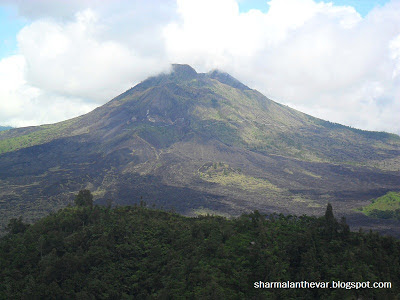OKA Agriculture Bali
Bali is also famous for its coffee. Besides the ordinary coffee, there is a special coffee known as the Luwak coffee. The Balinese feed the civet cats a.k.a musang with coffee beans. These cats eat the bean and excrete it. On other words, they shit the beans out. It is then collected, cleaned and dried. The dried beans are then made into Luwak coffee drink.
The OKA Agriculture Bali also produce cocoas and other products. Take a look at the pictures.
 |
| Vasuge at the entrance |
 |
| Wayan checking the coffee beans |
 |
| Cocoa |
 |
| Luwak coffee beans |
 |
| Coffee beans |
 |
| Coffee beans |
 |
| Cocoa beans |
 |
| Cinnamon, Vannila and Ginger |
 |
| Roasting the coffee beans |
 |
| Luwak coffee beans |
 |
| A note on Luwak coffee |
 |
| A worker preparing the drinks for us to taste |
 |
| Different types of drinks. Bali coffee, Luwak, Cocoa, Ginger Tea, Lemon Grass Tea |
 |
| Products for sale |
 |
| Lemon Grass |
 |
| Ginseng Plant |
 |
| Soaps |
 |
| Bali Coffee |
 |
| Bali Cigars made from Bali Tobacco |
 |
| Tock Ginger |
 |
| Tamarilo |
|
|
|
|
|
|
|
Kintamani
We had our lunch at Kintamani. The view was fantastic. Take a look at the pictures and see it for yourself.
Gunung Batur (Mount Batur) is actually an active volcano. The inner caldera is about 7.5 kilometer wide. It is dated to be about 23,670 to 28,500 years old.
There is also a lake. It is known as Danau Batur. It is Bali's largest lake and has an area of approximately 18 sq km. There is a village across the lake. It is known as Trunyan. This is where the Bali Aga people live. It is said that they bury their dead under the trees.
 |
| Mount Batur |
 |
| Our lunch |
Besakih
The Pura Besakih is the main temple in Bali. It is located on the slopes of Mount Agung, a volcano. This is also where the Eka Dasa Rudra festival is held once every 100 years.
Mount Agung erupted in 1963, killing about 1,700 people. The high priestess at that time, Ida Pedanda Istri Mas who was also an offering maker, did her offering in Pura Besakih. She was adamant not to leave the temple leaving her fate to God. The lava flow missed the temple by few metres. Both the temple and Ida Pedanda were safe.
Due to the volcanic eruption, the festival of Eka Dasa Rudra was postponed to 1979. It was a grand festival which was attended by the then President of Indonesia, Suharto.
Ida Pedanda died peacefully at the age of 111 on 9 February 2012.
 |
| Pura Besakih consist of several temples. Here is the map. |
 |
| The entrance |
 |
| The inner shrine. Tourist are not allowed but with some money, you can make it in. |
 |
| The statues on one side represents Ramayana and the other Mahabaratha. Not sure which is which. |
 |
| Pictures of the Eka Dasa Rudra festival held in 1979. |
 |
| Pictures of the Eka Dasa Rudra festival held in 1979. |
 |
| One of the clan temples where only clan members are allowed to go in. |
 |
| Surrounding villages |
 |
| Surrounding villages |
 |
| Surrounding villages |
Click to read the final part, Part 4
http://sharmalanthevar.blogspot.com/2013/04/bali-trip-2011-part-4.html




















































No comments:
Post a Comment